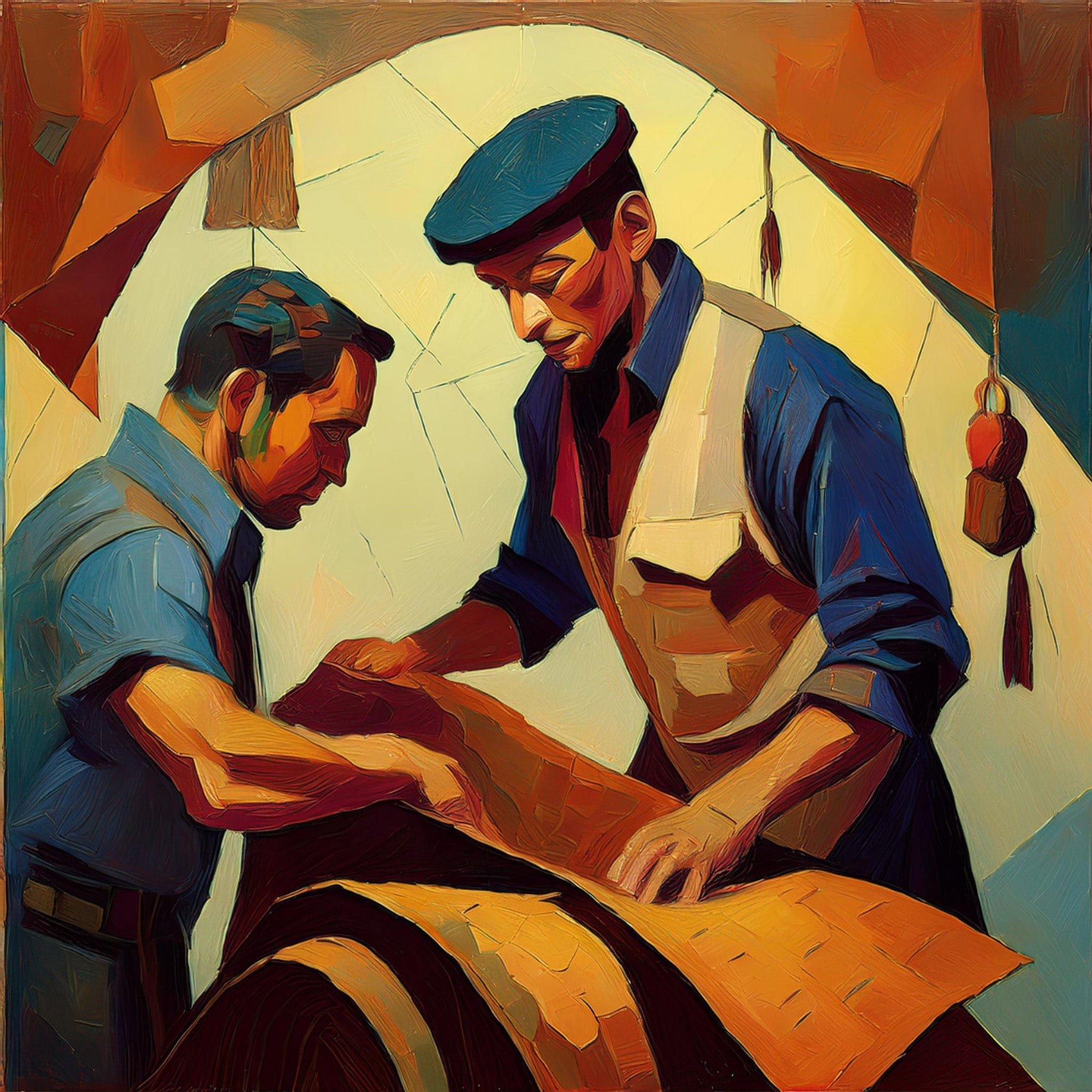The Evolution of Leather

From Ancient Craft to Modern Industry
Leather, a versatile and durable material made from animal hides, has been an essential part of human history for thousands of years. It has been used for clothing, footwear, tools, and more recently, for fashion and design. The process of making leather, known as tanning, has evolved over the centuries from rudimentary techniques to a sophisticated global industry. This history of leather traces its journey from ancient civilizations to modern-day production, reflecting both cultural practices and technological advancements.
Prehistoric and Ancient Leathercraft
The earliest use of leather dates back to prehistoric times, when humans discovered that animal hides could be preserved and used for practical purposes. Archaeological evidence suggests that as far back as 40,000 years ago, early humans used rudimentary tanning methods to process skins for clothing, shelter, and protection. These early techniques were likely simple, involving drying the hides in the sun or rubbing them with fats to prevent decay.
By the time of the Neolithic period, around 10,000 BCE, leatherworking had become more refined. Tools made from bone and stone were developed for cutting and shaping leather, allowing people to create more tailored garments and containers. Leather was particularly valuable for its durability, flexibility, and water-resistant properties, making it ideal for use in shoes, bags, and even early boats, such as those used by indigenous peoples in regions like North America.
Leather in Ancient Civilizations
As civilizations developed, so too did leathercraft. In ancient Egypt, leather was used not only for functional items like sandals, shields, and clothing but also for ceremonial purposes. The Egyptians had a well-established tanning process, using natural materials like oak and acacia bark to preserve hides. Leather played an important role in their society, with pharaohs and priests often wearing finely crafted leather items.
The Greeks and Romans also made extensive use of leather, particularly in their military equipment. Roman soldiers wore leather armor and sandals, and the Empire developed large-scale tanning operations to meet the demands of its armies. Leather was treated with tannins derived from tree bark, a practice that remained common for centuries. In addition to military uses, leather was used for domestic goods, including belts, horse harnesses, and parchment, an early form of writing material.
Medieval Leathercraft and the Guild System
In medieval Europe, leatherworking became increasingly specialized and regulated. Guilds, or trade associations, were formed to control the quality and production of leather goods. Tanners and leatherworkers were highly skilled artisans, and their craft was essential to medieval life. Leather was used for everything from shoes and belts to bookbinding and upholstery.
During this period, tanning was a time-consuming process, often taking up to 18 months. Hides were soaked in lime to remove hair, then treated with natural tannins from bark or other plant materials. The process was labor-intensive and required extensive knowledge of local materials and environmental conditions.
The Renaissance saw further advancements in leathercraft, with more decorative techniques being developed. Leather goods were often stamped or tooled with intricate designs, reflecting the growing demand for luxury items among the European elite.
The Industrial Revolution and Modern Leather Production
The Industrial Revolution in the 18th and 19th centuries marked a turning point for the leather industry. With the development of machinery and new chemical processes, leather production became faster and more efficient. One of the most significant innovations was the discovery of chromium tanning in the mid-19th century, which greatly reduced the time needed to tan hides from several months to just a few days. Chromium-tanned leather is more flexible and water-resistant than vegetable-tanned leather, making it ideal for modern manufacturing.
The industrialization of leather production led to the rise of mass-produced leather goods, from shoes and gloves to furniture and automotive interiors. Leather became a symbol of quality and luxury, particularly in the fashion industry, where designers began to experiment with different textures, colors, and finishes.
Environmental and Ethical Considerations
In the 20th and 21st centuries, the leather industry has faced growing scrutiny due to its environmental impact. Traditional tanning processes often involve the use of harmful chemicals, and the large-scale farming of livestock for hides contributes to deforestation and greenhouse gas emissions. In response, there has been a shift toward more sustainable and ethical practices. Vegetable tanning, which uses natural tannins, has seen a resurgence, and efforts to reduce waste and pollution in leather production are ongoing. Additionally, the rise of synthetic and alternative materials, such as vegan leather, reflects changing consumer preferences.
Leather's long history is a testament to its enduring appeal and utility. From the simple preservation techniques of prehistoric humans to the sophisticated manufacturing processes of today, leather has played a crucial role in human culture and industry. As society continues to evolve, so too will leathercraft, balancing tradition with innovation and sustainability in the modern era.

